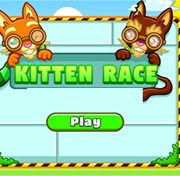Organs of the Human, Body – Science Activity For Kids
This science activity helps children learn to identify the various human body organs and their functions. They will learn to distinguish between the functions of human heart versus the brain. They will also learn about parts of the digestive system such as the stomach, intestines and kidneys.
This game is an important activity that introduces the human body’s major organ systems. These systems are made up of a variety of organs and tissues, which all work together as a functional unit. The chief components of these systems include the skin, esophagus, stomach, and intestines, which break down food into nutrients and eliminate waste. The excretory system removes toxic nitrogen compounds and other waste from the blood. The nervous system, which is made up of sensory organs, helps transmit sensory information and carry impulses to cause appropriate muscular or glandular responses.
For classroom practice, divide students into groups and play the roles of different organs in the human body. They research the functions of each organ and come up with a skit about the most important one. Through this activity, students learn the composition and functions of the different parts of the body, and the interrelationships between these parts of the body allow the individual organs to function properly and maintain homeostasis throughout the life cycle.
The organs of the human body work together to perform daily tasks. This game highlights the roles of different parts of the body and how they work together to keep the entire system healthy. Using the resources provided, students will be able to explore the function of different organs in the human body. The worksheet provided includes images and descriptions which can supplement any other activity.
Children will learn that each system is responsible for maintaining the health and balance of the body. For example, the heart pumps blood throughout the body and is the largest organ in the circulatory system. It also has a complex electrical system that ensures proper heart rate. A high heart rate indicates that the person is working hard, while a low-level heart rate means that the person is at rest.
In the human body, there are hundreds of organs. The digestive system breaks down food and assimilates nutrients for the body. This helps the body repair and grow. The process begins with mastication, when saliva mixes with the food. The bolus then travels down the oesophagus. The stomach secretes powerful enzymes that break down the food into a paste.
The respiratory system, whose role is to provide oxygen to the body, is responsible for breathing. The diaphragm is the thick band of muscle that sits directly under the lungs. It helps the lungs expand and contract when you breathe. The liver, meanwhile, is the most important organ in the metabolic system. It converts food into usable forms and detoxifies certain substances. It filters blood from the digestive tract and joins venous blood flow in other parts of the body. The liver is located under the rib cage.











